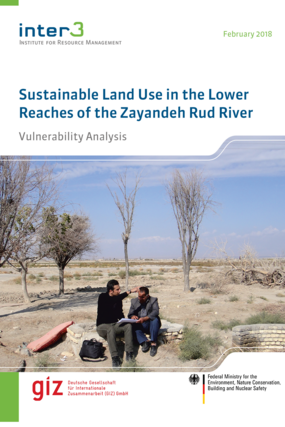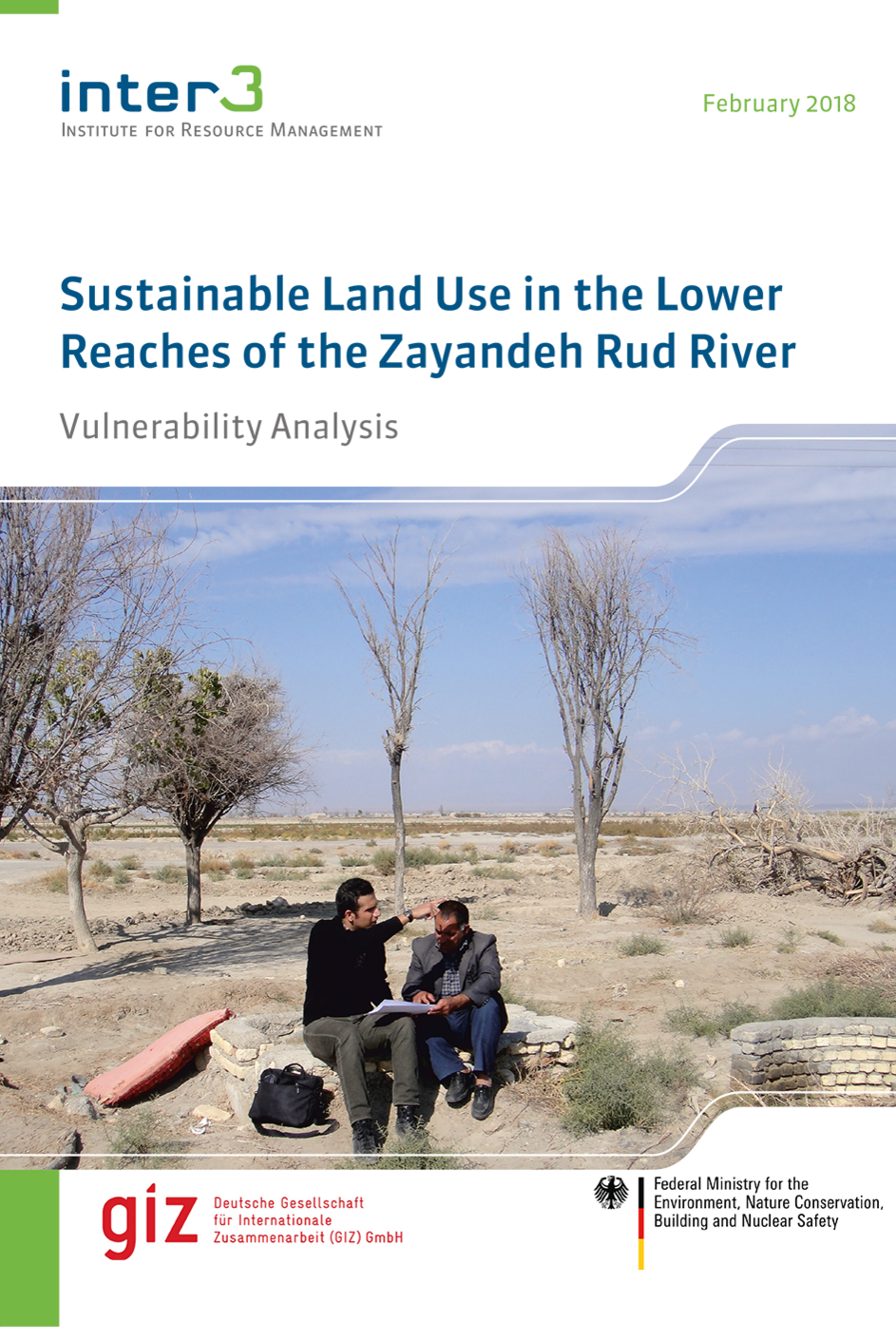Roodasht, central Iran: An arid region where water scarcity due to multiple uses and climate change led to supply problems and soil degradation.
The lower reaches of the Zayandeh Rud are almost exclusively inhabited by farmers who are heavily dependent on river water. Due to this dependency, local farmers are particularly affected by drought and desertification. At the same time, they can actively shape environmental and regional developments through their economic activities.
Preparation of a vulnerability analysis for the region
The preparation of this vulnerability analysis is the first of three project sections, which aim to show ways of enabling sustainable land use in the region. For the analysis, socio-economic and natural factors were taken into account to determine the resilience of farmers to water scarcity and to differentiate both vulnerabilities and potentials of the region.
Five major vulnerability factors were identified, including uncertain water availability, low agricultural production with poor land management, and low environmental protection efforts in the region. On this basis, an action plan was developed, which has also been published
The results were produced as part of the research project "Sustainable Land Use and Adaptation to Climate Change on the Lower Zayandeh Rud in Iran" (2015-2017), which was funded by BMUB and GIZ.

![[Translate to English:] Porträt von Dr. Shahrooz Mohajeri](/fileadmin/_processed_/e/2/csm_21c969_ls_weiss-162_cb8e5e877b.jpg)
